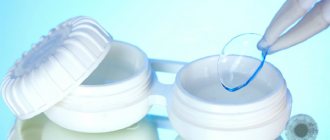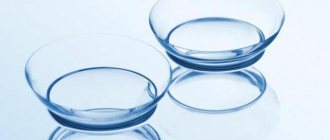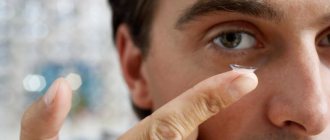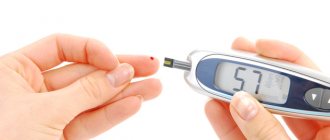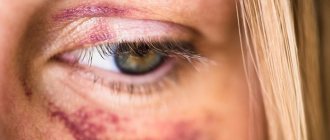When diseases affecting the organs of vision occur, various eye drops are prescribed. This is due to the fact that using drops is much more effective than taking oral medications. Therefore, it is important to know how to properly instill medicine into the eyes. This guarantees the achievement of maximum benefit from the drug used, and also eliminates the risk of various infections and damage to the organs of vision due to careless actions.
Share
Tweet
Share
Cool
Send
What are the drugs
Eye drops are a liquid form of drugs for local treatment of the organs of vision, which have different effects (depending on the type of disease they are used to combat). Eye drops can be moisturizing, antibacterial, antiviral, hormonal, blood pressure lowering, and so on.
IMPORTANT! Any drugs for the treatment of diseases of the organs of vision must be selected by an ophthalmologist individually for each patient.
Advantages of eye drops
- Quickly achieve the desired result. Since there are many capillaries in the eyeball, when the medicine hits them, it quickly penetrates into the blood and just as quickly has the desired effect. For this reason, the use of eye drops is often compared to intravenous drug administration;
- Efficiency. The liquid form of the medicine contains only those components that help quickly achieve the desired effect. For example, normalize eye pressure, clean the surface of the mucous membrane, stop the development of viruses, eliminate pathogenic microbes, etc.;
- Delicate impact. By understanding how to instill drops correctly, you can achieve not only a quick, but also a gentle effect on the mucous membrane of the eyes;
- A small dose is sufficient to achieve the desired result. Therapeutic drops are designed in such a way that only a few drops are enough to achieve the desired effect. The fact is that even such a small amount of the drug will contain a sufficient amount of active components.
It is worth noting that all the described advantages can be obtained only with the correct selection and use of the drug.
Indications for use
The range of applications for eye drops is quite wide. They are prescribed in the following cases:
- Fighting infections and viruses;
- Elimination of symptoms of an allergic reaction;
- Reduction and elimination of the inflammatory process;
- Reduced intraocular pressure;
- Improving metabolic processes inside the eyes;
- Slowing down the process of cataract formation;
- Slowing the progression of myopia;
- Carrying out diagnostic procedures;
- Moisturizing the mucous membrane of the eyes with severe dryness;
- Vasoconstriction;
- Elimination of fatigue, redness and irritation;
- Relieving swelling;
- Elimination of hyperemia in case of severely burst vessels inside the protein;
- Elimination of itching and sensation of “sand” (foreign body) in the eyes;
- Use of contact lenses;
- Postoperative period;
- Mechanical damage to the eyes;
- Various eye diseases.
IMPORTANT! You can use only the simplest drops, which contain a small amount of the active substance, on your own. Most often, without a doctor's prescription, you can use drops to relieve fatigue, moisturize mucous membranes after prolonged work at the computer, or medications to relieve allergy symptoms. It is advisable to use all other remedies after consultation with an ophthalmologist.
How to store medications
The method of storage depends on the composition of a particular drug. Some medicines, for example, solutions containing silver particles, cannot be left in the light, as under the influence of sunlight they will decompose and lose their properties.
Please note that some products, in particular antibiotic drops, often have a short shelf life. They must be stored in a cool place. But even if all necessary conditions are met, such compositions can only be suitable for 2-3 days after opening, which must be indicated in the instructions. This does not mean that the drops will become hazardous to health. They will simply lose their healing properties and will be useless.
How to choose the right drops for stuffy ears?
Ear diseases are dealt with by ENT specialists. Another name for him is an otolaryngologist. The specialist selects medications in accordance with the symptoms and diagnosis. In this case, the individual characteristics of the body are taken into account - age, the likelihood of allergies. It is very important to choose the composition of the product in accordance with the condition.
Tubootitis
For tubo-otitis, it is necessary to select drops that have an analgesic and anti-inflammatory effect. For example, to reduce discomfort, products with the main component in the form of choline salicylate are prescribed. One of these is Otinum drops. But the doctor may prescribe a drug with an additional antiseptic effect. For example, Albucid (Sodium Sulfacyl).
Cold
When you have a cold, your ear may become congested. Influenza or ARVI is characterized by a runny nose, which provokes blockage of the passages of the ENT organs. To eliminate the symptom, regular nasal drops are often used. That is, you first need to focus all your efforts on treating the nasal area.
Ear drops for congestion
Drops with the following active ingredients are suitable for these purposes:
- naphazoline nitrate;
- oxymetazoline hydrochloride;
- phenylephrine;
- xylometazoline.
All drugs are dripped into the nose. Through the use of medications, the mucus is cleared and the pressure on the middle ear is relieved. At the same time, ear congestion goes away.
Congestion during air travel
Every person is susceptible to congestion when flying on an airplane. Additionally, the symptom may occur when taking an elevator. This sign is not a deviation from the norm. The cause is a pressure difference. The auditory tube cannot quickly respond to changes. Because of this, the eardrum bends and ear congestion occurs.
To eliminate discomfort, you need to equalize the pressure using various exercises:
- opening and closing the mouth;
- swallowing;
- artificial yawning.
If the measures do not help, the pressure will level off on its own over time. But in some cases, ear congestion causes pain. Therefore, if you are planning a flight, it is better to visit a specialist and consult with him. Drugs containing lidocaine (Otipax, Anauran) are often prescribed. The component is an anesthetic and reduces discomfort.
Sulfur plugs
Ear congestion can occur when a plug forms. Sulfur accumulates and closes the organ. The passage of sounds inside is impaired. Pain, ringing and noise may also appear due to pressure.
In the presence of sulfur plugs, medications with the following active ingredients are prescribed:
- allantoin, benzethonium chloride;
- cocoylhydrolyzed collagen, cocobetaine;
- hydrogen peroxide.
Water in the ear
The ear may become blocked after exposure to water. For example, when visiting a shower or swimming in a pond. Often, tilting your head is enough for the liquid to flow out. To enhance the effect, you need to swallow something (water, food) several times. But, if the case is serious and there is pain, you need to visit a doctor.
It is possible that the feeling of water in the ear appeared due to wax plug. Then therapy involves the use of medications.
Fungus
If a fungus is present, your doctor will often prescribe antibiotics.
The following medications may be prescribed:
- with rifamycin;
- with neomycin sulfate and polymyxin B;
- with chloramphenicol, clotrimazole, lidocaine;
- with norfloxacin.
Pros and cons of self-administration of drugs
The advantages include the following:
- The ability to undergo treatment at home, since there is no need to see a doctor every time to carry out the procedure;
- The ability to independently provide first aid to a patient, for example, in the event of the development of conjunctivitis or an allergic reaction;
- Sometimes using drops on your own eliminates the need for medical help if you need, for example, to eliminate the symptoms of a mild allergy.
The disadvantages include the following:
- If hygiene rules are not followed, any infection can be introduced into the eyes, which will only worsen the patient’s condition;
- If the drug is instilled incorrectly (non-compliance with basic recommendations and frequency of use), it can cause harm to the visual organs.
REFERENCE. All the disadvantages of using eye drops independently can be minimized if you carefully study the recommendations for its use and strictly follow them.
Common mistakes and their consequences
The most common mistakes when instilling eye drops on your own are the following:
- Drooping of the eye immediately after instillation. For this reason, the drug may immediately flow out of the eye and not enter the conjunctival sac. This will lead to a lack of therapeutic effect;
- Improper storage of the drug. Be sure to read the instructions immediately after purchasing the drops. Pay special attention to the section on storage conditions. If you do not follow all the rules, the drops will lose their therapeutic effect;
- Instillation of the medicine into the inner corner of the eye. This will lead to the fact that almost all of the used drug will flow out and will not enter the conjunctival sac;
- Use of drops not according to instructions. Frequent instillation will cause damage to the cornea;
- Mechanical effects on the eyes. Some eye drops cause discomfort after use. If the patient tries to get rid of the discomfort by rubbing his eyes with his hands, this can intensify the sensations and even cause inflammation of the mucous membrane of the eyes;
- Failure to comply with hygiene rules. A tube of eye drops is a great place for germs to grow. Therefore, if hygiene rules are not followed, an additional infection can be introduced into the eyes and the patient’s condition may worsen;
- Touching eyelashes with a bottle pipette . The fact is that a large number of dust particles and various microorganisms (including harmful ones) accumulate on the eyelashes. Therefore, if a pipette of drops touches the eyelashes, there is a risk that an infection will be introduced into the eye;
- Using one nozzle for instilling medicine. If a doctor has prescribed a drug that must be instilled into the eyes, nose and ears at the same time, it is necessary to use a separate nozzle for each procedure or disinfect it before each use. Otherwise, this may lead to infection of one of the mucous membranes.
Expert opinion
Kim Oksana Alexandrovna
Head of the ophthalmology clinic. Ophthalmologist with more than 10 years of experience.
Before using the drug, you need to take another look at its label and make sure that these are really drops for eye drops and not for oral administration. The fact is that drugs intended for oral use can have a negative effect on the mucous membrane of the eyes. Conversely, when using eye medicine internally, you can get an eating disorder and even poisoning.
Precautionary measures
When using drops, keep the following precautions in mind:
- Do not increase or decrease the dosage of the drug indicated by the doctor.
- You cannot extend or reduce the period of use of the drug.
- You cannot replace one drug with another, even if their effect is similar. Only a doctor can choose the most suitable remedy and regimen for your case.
- You should not use several drugs at the same time. If the doctor prescribed 2 types of ear drops at once, then wait 15-20 minutes between procedures.
- If side effects are noticed during the use of the product, for example, a rash, burning, redness of the skin appears, you should immediately stop using the drug and consult a doctor.
Important! Most ear drops are contraindicated for use in the presence of injuries or damage to the walls of the ear canal and eardrum.
All drugs can be divided into several types: painkillers that relieve inflammation and swelling, eliminate pathogens, hormonal and non-steroidal drugs, as well as drugs for softening and removing wax plugs. In most cases, all these medications give the first tangible results after the first use. But the desired therapeutic effect can be obtained from them only if you follow all the recommendations of the attending physician.
Hygienic requirements
When instilling medicine, it is important to follow basic hygiene rules that will help avoid various infections getting into your eyes:
- Before instilling the medicine, you must wash your hands thoroughly with soap;
- After the protective cap is removed, do not touch the bottle with the pipette to the patient’s hands, face, eyelashes or other objects;
- After instilling the medicine, you must wash your hands thoroughly again with soap.
Sequence of use of various drugs
In some cases, your doctor may prescribe the use of several types of eye drops at once. In this case, it is important to maintain an interval between instillation of different drugs of about 20-30 minutes.
This means that after instilling the first drug, you need to wait 20-30 minutes, and only then use the next drops. There is a need to instill a third medicine, it is important to wait the same amount of time before using it.
In what order it is necessary to instill different drops, you should ask your doctor in advance.
If the ophthalmologist has prescribed washing the eyes with a special solution or decoction of herbs (as is done for purulent conjunctivitis), this should be done before instilling drops.
If the patient must use ointments simultaneously with the drops, the drops are used first, and only after 3-5 minutes the ointment is placed under the lower eyelid. If these procedures are reversed, the drops will not get into the eyes, since the ointment will prevent the active substance from passing through the cornea.
Oil drops against ear congestion
Preparations in this group promote the gentle removal of sulfur masses without their splitting. They lubricate the ear canal with the oils included in the composition, after which the accumulations of secretions smoothly come out of the ear under the influence of natural mechanisms.
Read more List of drops for conjunctivitis for children
Vaxol
The product is made from 100% pharmaceutical olive oil. Vaxol acts as an antimicrobial and antifungal medicine. It effectively relieves inflammation in the ear cavity. The contents of the bottle are designed for 200 uses. To treat wax plugs, the product is used 1 – 2 times a day for 5 days.
Vaxol has a minimum of contraindications - an allergy to olive oil and perforation of the eardrum. The use of the solution in children, the elderly, pregnant and lactating women should be under the supervision of a specialist. Vaxol should only be prescribed to them by a doctor.
Earex
These ear drops can be used to soften and remove hard ear wax, preventing the formation of hardened ear wax. Earex are suitable for adults and children aged two years and older. But before using them to treat a child, you must consult a specialist.
The drops contain only 2 active components - glycerin and hydrogen peroxide. Glycerin softens the sulfur plug, and hydrogen peroxide helps remove it. The product should not be used by people with a damaged eardrum, inflammation of the ear, eczema or allergies to components. For treatment you will need 3-6 drops up to 2 times a day. The duration of use depends on the severity of the problem. But using drops for more than 5 days is not recommended.
Clin Irs
Another popular ear drops. The unique medicine is based on a derivative of olive oil. It contains active chemicals that help effectively solve the problem of ear plugs.
Innovative drops are recommended to be used to soften and dissolve sulfur plugs that clog the ear canals. The therapeutic drug triggers a natural cleansing mechanism. Thanks to this, the patient gets rid of wax seals painlessly. When introducing drops, a gentle flushing method is used, which ensures uniform distribution of liquid throughout the channel.
Step-by-step instructions for using the products yourself
- Before starting the instillation, wash your hands with soap (it is better to choose an antibacterial agent for this) and dry them with a paper towel. It is paper, not textile, since the fabric can leave germs on your hands (if the towel is not freshly washed) or particles of lint. All this can cause infections in the eyes;
- Also, before starting the procedure, gently wipe your eyes. If there is makeup on your eyelids and eyelashes, you need to remove it. Glasses and contact lenses should also be removed;
- Next you need to take a comfortable position. It is best to lie on a bed (without a pillow) or sit on a chair. You should not instill drops while standing, as this will create some inconvenience;
- Remove the cap from the bottle, tilt your head back and pull down your lower eyelid with one finger. This will create a small “pocket” into which it will be easier to drop the medicine;
- Take the drug with your other hand, tip the bottle over and bring the dropper as close to the eye as possible. In this case, the main thing is that the tip of the bottle does not touch the conjunctival membrane;
- Place one or two drops of the medicine, trying to do it closer to the outer corner of the eye. Don't worry if you end up putting in more than you need. In such a situation, excess drops will simply come out along with tears. The fact is that the volume of one drop is approximately 25 μl, and the eye of an adult can hold no more than 15 μl;
- After the medicine has hit the mucous membrane, close your eye for a few minutes and rotate the pupil so that the medicine is distributed more evenly. You should not blink at this time, as this may cause most of the medicine to wash out. Instead, you can gently massage the corners of your eyes;
- Next, take a clean cotton swab and blot any excess medication remaining on the eyelid and under it. Repeat the same for the other eye, but with a fresh cotton pad;
- If the doctor has prescribed several eye drops, do not forget to maintain the necessary pause between their use, as described in the section on the sequence of use of different drugs.
IMPORTANT! If you are afraid to instill the medicine yourself, ask someone else to do it. Using eye drops on your own is always difficult, and there is a risk of damaging the cornea with awkward movements.
The sequence of putting drops into the eyes
Often you have to perform the procedure yourself.
In this case, the algorithm of actions is as follows:
- First of all, you need to carry out all hygiene measures.
- After this, you need to take a comfortable position (for example, sitting or lying down) and tilt your head back.
- The next step requires pulling the lower eyelid down. The eye at this moment should look upward. Only in this position of the eye does the conjunctival sac open as required.
- Next, you need to instill a few drops of the medicine (or as much as indicated in the instructions or doctor’s prescription).
- Wait a few minutes and close your eye.
- Clean the pipette and put the bottle in the refrigerator.
A similar procedure is performed when using most ophthalmic agents in the treatment of various diseases.
| Pathology treated with drops | Effective drug | Peculiarities |
| Conjunctivitis (bacterial) | Levomitecin | A broad-spectrum drug. The product is not able to penetrate the lens. The drug quickly relieves discomfort and is suitable for long-term use. |
| Conjunctivitis (viral) | Oftalmoferon | Well relieves inflammation caused by a virus or allergen. The drug is a mild anesthetic. Promotes rapid tissue regeneration. |
| Glaucoma | Timolol | It is a beta-blocker, which, due to the active substance, can reduce the amount of aqueous humor. Usually doctors recommend instilling no more than 1 drop twice a day and not exceeding the duration of the course of treatment. |
| Barley | Gentamicin | The main component is the antibiotic – gentamicin sulfate. The product is used for severe inflammation and risk of damage to the ocular structure. Directional agent. |
If the medicine is used by a patient who wears lenses and wants to additionally moisturize the eyes, then there are special products that can be dripped directly onto vision correctors. For example, such drugs include Cationorm, Okutiarz, Oftagel.
Instructions for use in children
Carrying out the procedure of instilling medicine into the eyes of a child is much more difficult than for an adult, because he may get scared, which will lead to uncontrollable sudden movements. This threatens that an adult may drop the bottle or accidentally damage the child’s cornea with the pipette from the bottle.
To avoid unpleasant consequences for the youngest children, before starting the procedure they must be distracted with various bright toys that are hung from the crib or playpen. A pattern on the wallpaper or ceiling is also suitable for these purposes. If you don’t have anything like this at hand, you should call an assistant who can distract the baby’s attention.
For older children, another option is suitable: ask someone close to you to hold the baby in your arms in a reclining position, distracting him from the unpleasant procedure.
The process of instilling medicine into a child consists of the following steps:
- 10 minutes before using the medicine, you need to rinse your baby's eyes. To do this, use a cotton pad moistened with warm boiled water, a decoction of chamomile or a weak solution of Furacilin;
- At this time, the medicine itself must be slightly warmed to a warm state;
- 10 minutes after washing the eyes, place the child on a chair or the hands of an assistant in a reclining position, and place your elbows on a support (so that your hands do not shake) on both sides of the baby;
- With one hand, push back the lower eyelid, with the other, drop the required amount of medicine into the conjunctival sac;
- Ask your child to move their eyes under closed eyelids to distribute the medicine;
- Blot excess drops with a clean cotton pad to avoid getting them into your ears;
- After completing the procedure, ask the child to remain in this position for 5-10 minutes, and only then release.
After the drops are instilled, do not allow the child to rub or touch the eyes with their hands to avoid infection of the mucous membrane.
If it was not possible to drop the medicine exactly into the outer corner of the eye, it will still end up on the mucous membrane. After the child rotates his eyes, the drops are distributed over the entire surface of the eyeball.
An adult should not forget about the rules of hygiene, and wash their hands with soap before instilling the child and the medicine, and immediately after the procedure is completed.
Useful video
How to put eye drops into your eyes correctly?


